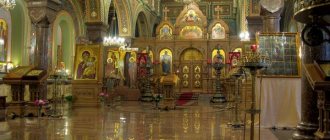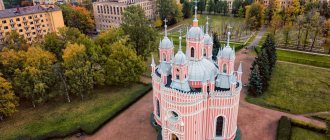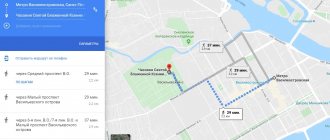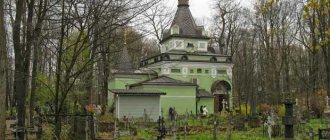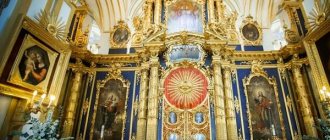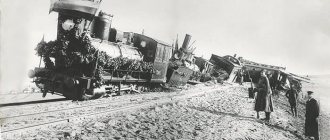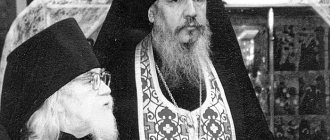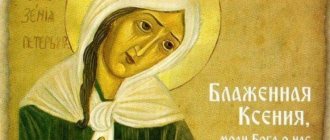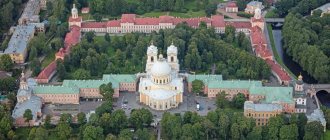Mir
Russia St. Petersburg Church of the Apostle. Petra in Vesyoly Poselok (St. Petersburg) Map is loading...
{"format":"leaflet","minzoom":false,"maxzoom":false,"limit":50,"offset":0,"link":"all","sort":[""], "order":[],"headers":"show","mainlabel":"","intro":"","outro":"","searchlabel":"\u2026 \u0441\u043b\u0435\ u0434\u0443\u044e\u0449\u0438\u0435 \u0440\u0435\u0437\u0443\u043b\u044c\u0442\u0430\u0442\u044b","default":"","import-annotation":false,"width ":"auto","height":"350px","centre":{"text":"","title":"""link":"""lat":59.9082379999999972142177284695208072662353515625,"lon": 30.460457999999999145757101359777152538299560546875,"icon":""},"title":"","label":"","icon":"","lines":[],"polygons":[],"circles":[ ],"rectangles":[],"copycoords":false,"static":false,"zoom":8,"defzoom":14,"layers":["OpenStreetMap"],"image layers":[] ,"overlays":[],"resizable":false,"fullscreen":true,"scrollwheelzoom":true,"cluster":false,"clustermaxzoom":9,"clusterzoomonclick":true,"clustermaxradius":80, "clusterspiderfy":true,"geojson":"","clicktarget":"","showtitle":true,"hidenamespace":false,"template":"","userparam":"","activeicon": "","pagelabel":false,"ajaxcoordproperty":"","ajaxquery":"","locations":[{"text":"\u003Cb\u003E\u003Ca href=\"/palomnik/%D0% A6%D0%B5%D1%80%D0%BA%D0%BE%D0%B2%D1%8C_%D0%B0%D0%BF._%D0%9F%D0%B5%D1%82%D1% 80%D0%B0_%D0%B2_%D0%92%D0%B5%D1%81%D1%91%D0%BB%D0%BE%D0%BC_%D0%BF%D0%BE%D1%81% D1%91%D0%BB%D0%BA%D0%B5_(%D0%A1%D0%B0%D0%BD%D0%BA%D1%82-%D0%9F%D0%B5%D1%82% D0%B5%D1%80%D0%B1%D1%83%D1%80%D0%B3)\» title=\»\u0426\u0435\u0440\u043a\u043e\u0432\u044c \u0430\u043f. \u041f\u0435\u0442\u0440\u0430 \u0432 \u0412\u0435\u0441\u0451\u043b\u043e\u043c \u043f\u043e\u0441\u0451\u043b\u043a\u0435 (\u0421\u0430\u043d\u043a\ u0442-\u041f\u0435\u0442\u0435\u0440\u0431\u0443\u0440\u0433)\»\u003E\u0426\u0435\u0440\u043a\u043e\u0432\u044c \u0430\u043f . \u041f\u0435\u0442\u0440\u0430 \u0432 \u0412\u0435\u0441\u0451\u043b\u043e\u043c \u043f\u043e\u0441\u0451\u043b\u043a\u0435 (\u0421\u0430\u043d\u043a\ u0442-\u041f\u0435\u0442\u0435\u0440\u0431\u0443\u0440\u0433)\u003C/a\u003E\u003C/b\u003E\u003Chr /\u003E\u003Ca href=\»/palomnik/%D0% A1%D0%B2%D0%BE%D0%B9%D1%81%D1%82%D0%B2%D0%BE:%D0%90%D0%BD%D0%BD%D0%BE%D1%82 %D0%B0%D1%86%D0%B8%D1%8F\" title=\"\u0421\u0432\u043e\u0439\u0441\u0442\u0432\u043e:\u0410\u043d\u043d\u043e\u0442\ u0430\u0446\u0438\u044f\»\u003E\u0410\u043d\u043d\u043e\u0442\u0430\u0446\u0438\u044f\u003C/a\u003E: »'\u0425\u0440\u0430\u0 43c\u0430\u043f \u043e\u0441\u0442\u043e\u043b\u0430 \u041f\u0435\u0442\u0440\u0430"' \u0432 \u0412\u0435\u0441\u0451\u043b\u043e\u043c \u0 43f\u043e\u0441\u0451\u043b 2005 u043e\u0432\u044c \u0430\u043f.\u041f\u0435\u0442\u0440\u0430 \u0432 \u0412\u0435\u0441\u0451\u043b\u043e\u043c \u043f\u043e\u0441\u0451\u04 3b\u043a\u0435 (\u0421\u0430 \u043d\u043a\u0442-\u041f\u0435\u0442\u0435\u0440\u0431\u0443\u0440\u0433)","link":"","lat":59.90823799999999721421772846952080726 62353515625,"lon":30.460457999999999145757101359777152538299560546875,"icon" :""}],"imageLayers":[]}
59.908141; 30.460838
Russia, St. Petersburg, Iskrovsky prospect, 11
Saint Petersburg
Russia
Telephone.:
+7 (812) 442-81-68
Email:
Temple of the Apostle Peter
in Vesyoly Poselok founded in 2005. Belongs to the St. Petersburg diocese of the Russian Orthodox Church.
Peter and Paul Cathedral in the Peter and Paul Fortress
Peter-Pavel's Fortress
Photo by Irina Ivanova
Peter and Paul Cathedral is the abbreviated name of the temple. Its official name is the Cathedral in the name of the supreme apostles Peter and Paul. Emperor Peter I sought to strengthen the dominant position of the new capital among the cities of Russia, so he wanted to build a cathedral that would rise above the bell tower of Ivan the Great in the Kremlin and the Menshikov Tower, and would be located in the very heart of the Peter and Paul Fortress. From 1733 until 2012, the 122.5 m high cathedral was considered the tallest building in St. Petersburg, and until 1952 it was the tallest in Russia.
The construction of the Orthodox church under the leadership of the chief architect of the city, Domenico Trezzini, took 20 years - from 1712 to 1732. The appearance of the cathedral is unusual for traditional Russian religious architecture. The building was built in the Petrine Baroque style, based on examples of Swedish, German and Dutch civil architecture.
In addition to its height, the cathedral is notable for the fact that it became the tomb of Russian emperors. In pre-Petrine Rus', the great Moscow princes and kings were buried in the Archangel Cathedral of the Moscow Kremlin. After the burial of Peter I, almost all the emperors and empresses up to Alexander III were buried in the tomb.
In 1954, the building was transferred to the City History Museum, but since the 1990s, divine services have been regularly held in the Peter and Paul Cathedral.
Church of the Holy Chief Apostles Peter and Paul
Shuvalovsky Park, 41
Source
The neo-Gothic style, unexpected for an Orthodox church, was used due to the fact that nearby there is a crypt built in a similar style.
In the 1820s, the Pargolovo manor (estate) was owned by Countess Varvara Petrovna Shuvalova. She was married three times, but the death of one of her husbands, the Swiss Adolphe Pollier, shocked the countess especially strongly. Having been widowed, she instructed Alexander Bryullov to build a square in the park, where she later buried her husband. It was a Gothic-style crypt, decorated with a pointed cast-iron arch at the entrance.
Later, Varvara Petrovna turned to the spiritual consistory with a request to allow the construction of a church over the crypt according to the design of the same architect. After 10 years of construction, the Church of Peter and Paul became the family temple of the Shuvalov-Vorontsovs. It was here that the Russian composer Nikolai Rimsky-Korsakov married Nadezhda Purgold.
In the 1930s the church was closed, the interiors previously created by Harald Bosse and Stepan Krichinsky were destroyed. The building alternately housed a physiotherapy room, and later even an experimental laboratory of the Research Institute of High Frequency Currents named after V.P. Vologdin.
The church was returned to believers only in 1991. Then it was restored, restoring its original appearance.
Church of Saints Peter and Paul (Petrichirche)
Nevsky pr., 22 - 24, lit. b
Source
The Church of Saints Peter and Paul is widely known as Petrikirche - “Church of Peter” translated from German. This Lutheran church in the very center of the city appeared under Peter II, who in 1727 donated a piece of land on Nevsky Prospect to the German Lutheran community. A year later, on the day of the Holy Apostles Peter and Paul, the church was founded, and two years later it was consecrated - this happened on the day of the celebration of the 200th anniversary of the Augsburg Confession.
The first building was brick, had a wooden turret and accommodated 1,500 people. It has not reached our time. Over the course of 100 years, the church fell into disrepair, and at the beginning of 1832 the community announced a competition to create a new project. The best work was recognized as the version of the Honored Professor of Architecture of the Imperial Academy of Arts Alexander Bryullov, the elder brother of the famous artist Karl Bryullov.
In August 1833, a new building was laid. The interior and architecture of the new church combined Romanesque, Gothic, Renaissance and antique motifs.
At the beginning and middle of the 20th century, Petrikirche was used as a warehouse, first for theatrical scenery, then for vegetables. During these years, the church was even converted into a swimming pool. The layout was significantly changed and the interior was lost.
The German Lutheran community managed to regain the church only in the 1990s. In addition to religious services, there are charity concerts, excursions to the Catacombs Museum (1st floor), and German language courses. And the third floor of the administrative (rear) part of the building has been converted into a German-Russian meeting center.
Church of the Holy Chief Apostles Peter and Paul at the Military Medical Academy named after S. M. Kirov
St. Academician Lebedeva, 6B
Source
“In the name of the holy apostles Peter and Paul on Bolshoy Samsonievsky Prospekt, a house church in honor of the icon of the Mother of God “Quench my sorrows.” Once upon a time there were eight churches on the territory of the Military Medical Academy; now there are three.
By decree of Peter I, first a naval and then a land hospital was founded on the Vyborg side. At each of these hospitals, home churches were erected, including the Church of the Holy Apostles Peter and Paul. Due to financing problems, the construction of the temple dragged on for decades, so the house church was placed on the second floor of the new Marine Hospital.
The Church of the Holy Apostles Peter and Paul was decorated only in 1818 after a major renovation; in 1838 it came under the control of the clergy of the house church of the Military Medical Academy (Church of the Smolensk Icon of the Mother of God). In the mid-19th century, according to the design of G. S. Voinitsky, the church was redone, and in the early 1890s, according to the design of P. I. Balinsky, a stone chapel for funeral services was built. It is made in the Russian-Byzantine style, sculpted by D. I. Jensen. The church contained a double-sided icon with the relics of St. Sergius of Radonezh and four silver lamps - a gift from Catherine II.
During Soviet times, the temple was closed. In 2015, after a thanksgiving service on the occasion of the 260th anniversary of the consecration of the first temple of the academy in honor of the apostles Peter and Paul, it was decided to return the premises to the believers. Now religious services are held here.
Church of Peter and Paul in Dibuny
village Pesochny, Klyuchevaya st., 1
Source
The church was founded by provincial secretary P.I. Nikolsky in 1914. Built under the leadership of architect Andrei Petrovich Aplaksin in the neo-Russian style.
In 1932, the church, like many others, was closed. At first it housed the Lenfilm warehouse, where narrow films were stored, then there was a paint production site for the Pigment association. In the 1980s, the building began to be used for cutting gas pipes. During this time, the church lost its bell tower and dome.
The temple was returned to the Orthodox Church only in the 1990s. It is currently under restoration, so regular services have not been resumed. A religious procession is currently being held from the Church of Seraphim of Sarov in the village. Pesochny, and also, annually on the day of the Holy Apostles Peter and Paul, the divine liturgy.
In 2016, Metropolitan Barsanuphius consecrated the main altar of the church in the village of Vesele
In 2012, it was decided to donate the relics of the Apostle Peter to the temple for eternal possession. In 2016, Metropolitan Barsanuphius consecrated the main altar of the church in the village of Vesele and led the divine liturgy there.
In 2016, Metropolitan Barsanuphius consecrated the main altar of the Church of the Apostle Peter in the village of Vesele, after which he led the Divine Liturgy there
Church of the Holy Apostles Peter and Paul in the Znamenka estate
Peterhof, St. Petersburg highway, 115, bldg. 10, lit. A
Source
The Church of the Holy Apostles Peter and Paul in Znamenka is considered one of the oldest operating churches in Peterhof. The organizers of the temple were the owners of the Vasilyevskaya manor (the future Znamenka estate) - the Rzhevsky princes. In September 1718, Prince John Ioannovich of Rzhevsky submitted a petition to Tsar Peter I for the consecration of the already built wooden church:
“In St. Petersburg, by the sea, in my newly built Vasilievskaya manor, I built a church in the name of the great apostles Peter and Paul, and it, my church, is ready for consecration.”
In 1761, Count Alexei Grigorievich Razumovsky turned to Empress Elizabeth with a request to allow the construction of a new stone church next to the old wooden one. The temple was consecrated by Metropolitan Gabriel (Petrov) of St. Petersburg already in 1771 in the presence of Empress Catherine II and the brother of the initiator of the stone reconstruction of the temple - Kirill Grigorievich Razumovsky.
Since the time of Empress Elizabeth, the church has been the family temple of the royal family. It was here that the “Sign” icon, with which Peter I blessed his daughter, was kept for a long time.
In 1877, the temple was partially rebuilt by the architect Harald Julius Bosse.
In 1930, the Church of Peter and Paul was closed and for many years was used as a food warehouse for the Fruit and Vegetable Institute. Only in 1993 the dilapidated temple was returned to believers.
Since 2001, the Church of the Holy Apostles Peter and Paul in Znamenka has been operational.
Burned by a falling candle
In March 1750, the newly built temple burned to the ground. From a fallen candle. Only the iconostasis from the chapel, Peter's relics and part of the utensils were saved.
Two years later, they decided to rebuild the Trinity Cathedral in the same place. The design of the new building was drawn up by Bartolomeo Rastrelli. However, Catherine II ordered not to rebuild the cathedral, but to use a ready-made wooden church, which was dismantled and stored during the construction of the Third Summer Palace (on the site of the Mikhailovsky Castle).
In the winter of 1753, the parts were transported and began to be assembled. Attempts to recreate the former Trinity Cathedral were unsuccessful. As a result, in appearance, size and internal layout it was quite different from the old one. Now there was no chapel.
In June 1756, the restored cathedral with a new three-tier iconostasis was consecrated and opened its doors again. The Empress donated a velvet canopy embroidered with gold to him.
Cathedral of Peter and Paul in New Peterhof
Peterhof, St. Petersburg Ave., 32
Source
The initiative to build a new church in Peterhof belonged to Ioann Yanyshev, protopresbyter, head of the court clergy, protopresbyter. The petition was due to the fact that there was no church in the city capable of accommodating a large number of parishioners at the same time. Alexander III personally determined the location of the temple near the Tsaritsyn (Olgin) pond.
The foundation stone of the temple took place on July 25 (August 6), 1895. Its construction in the neo-Russian style was carried out with funds from the Ministry of the Imperial Court. The work was led by architect Vasily Kosyakov based on a design by Nikolai Sultanov. The cathedral can accommodate 800 people.
After the revolution, the temple became a parish cathedral. In 1922-1937, it housed the see of Bishop Nikolai (Yarushevich) of Peterhof. In 1938, the temple was closed and plans were made to blow it up. During the war, the building was badly damaged, especially its northern part. It was here that the German spotter was located, monitoring the movement of Soviet ships - they tried to shoot him down, because of this the building was constantly under fire.
Only in 1974 the temple came under state protection as a historical and cultural monument. Restoration began under the leadership of E. P. Sevastyanov. By 1987, all work on the restoration of the facades, which was carried out by the Leningrad Restorer Association, was completed. Despite the fact that they were going to build a museum or concert hall in the temple, in 1989 the Peterhof community achieved the return of the church building. Now it is an active Orthodox church.
Second major fire
On the night of February 7, 1913, a fire broke out in the cathedral again: the dome, roof, vestibule and bell tower burned down. Two weeks later, the Synod began collecting funds for the construction of “a new majestic temple corresponding to the significance and dignity of the capital.”
A competition was held, famous architects presented their projects: some “in the Suzdal style,” some “two fathoms taller than Isaac,” some in imitation of the Assumption Cathedral in Moscow.
A construction committee was created headed by Prince Ivan Romanov, but the Imperial Russian Archaeological Society, which was in charge of protecting the monuments, did not like these plans. It proposed not to give the burnt temple to the Shamorda courtyard in Strelna, but to restore it “as a historical shrine - a symbol of the modern Russian empire.”
Photo from 1913 before the fire. Source: zvon.ru
Photo from 1913 after the fire. Source: citywalls.ru
The burned cathedral was covered with a protective roof. Services were held next door - in a two-altar wooden church, which stood until the end of 1927 and was a copy of the Trinity Cathedral.
The restored iconostasis, surviving parts and utensils were transferred to it from the damaged structure. New bells were cast by the Valdai Bell Factory.
View of a temporary church under construction next to the burnt Trinity Cathedral. Source: citywalls.ru
Townspeople watch the raising of bells to the bell tower of the Cathedral of the Holy Trinity, December 1913. Source: citywalls.ru
Temple of the Holy Apostles Peter and Paul of the Russian Submarine Fleet in Sestroretsk
Sestroretsk, Petrovskaya embankment, 1
The first wooden church in Sestroretsk was built during the life of Peter I at the beginning of the 18th century. It was erected from stone in 1781. The construction used materials that remained from the destroyed palace of the emperor in an oak grove. In the middle of the 19th century, the church burned down, and exactly 100 years later - in 1871 - a new church was founded in the center of Sestroretsk with funds from Alexander II, the Synod and donations from citizens. But this building also has not survived to this day. In the 1930s, the cathedral was destroyed and a school was built in its place.
In the 2000s, the church was restored. This is a completely new building: the consecration of the site for the restoration of the temple took place in 2002, and the building was laid only in 2004. The temple was erected in memory of Russian submariners: according to legend, in Lake Razliv, peasant Efim Nikonov showed Emperor Peter I a “hidden ship” - a prototype of a submarine. The ceremonial consecration of the church took place in the presence of the Minister of Defense of the Russian Federation and the Commander-in-Chief of the Navy.
The temple was built according to the design of E. F. Shapovalova with a slight stylization of ancient Russian church architecture.
The cathedral was not built the first time
There were two, or even three attempts to build a church. According to legend, in May 1703, Peter I chose a specific place and cut down a willow bush there. However, something interfered with the king's plans. Four months later, a second order was received: to lay the foundation “as a sign of gratitude to the Triune Divinity” of a church on the right bank of the Neva, not far from the fortress under construction.
A memorial plaque was later installed on the cathedral: “built by Emperor Peter I on May 16, 1703, in memory of the capture of the former fortress on Okhta, New Kantsy or Shantsy.”
However, in the detailed descriptions of foreign travelers who visited the city on the Neva in the first years of its existence, the Trinity Church is not mentioned. It is also not on the city plan of that time. It remains to conclude that the cathedral did not appear in 1703.
Most likely, the cathedral was founded in April 1709, and consecrated in July 1711. Two years later, the small wooden building was expanded with chapels and a refectory, above which a two-tier bell tower with chimes could be seen. By the way, the chimes were removed from the Moscow Sukharev Tower. Every 15 minutes they played “Lord Have Mercy.”
In 1721, in memory of the Battle of Lesnaya, the chapel of St. Chariton the Confessor was added, where a camp church of Peter was erected. Then it was converted into the assigned Nikolo-Trunilovsky Church.
